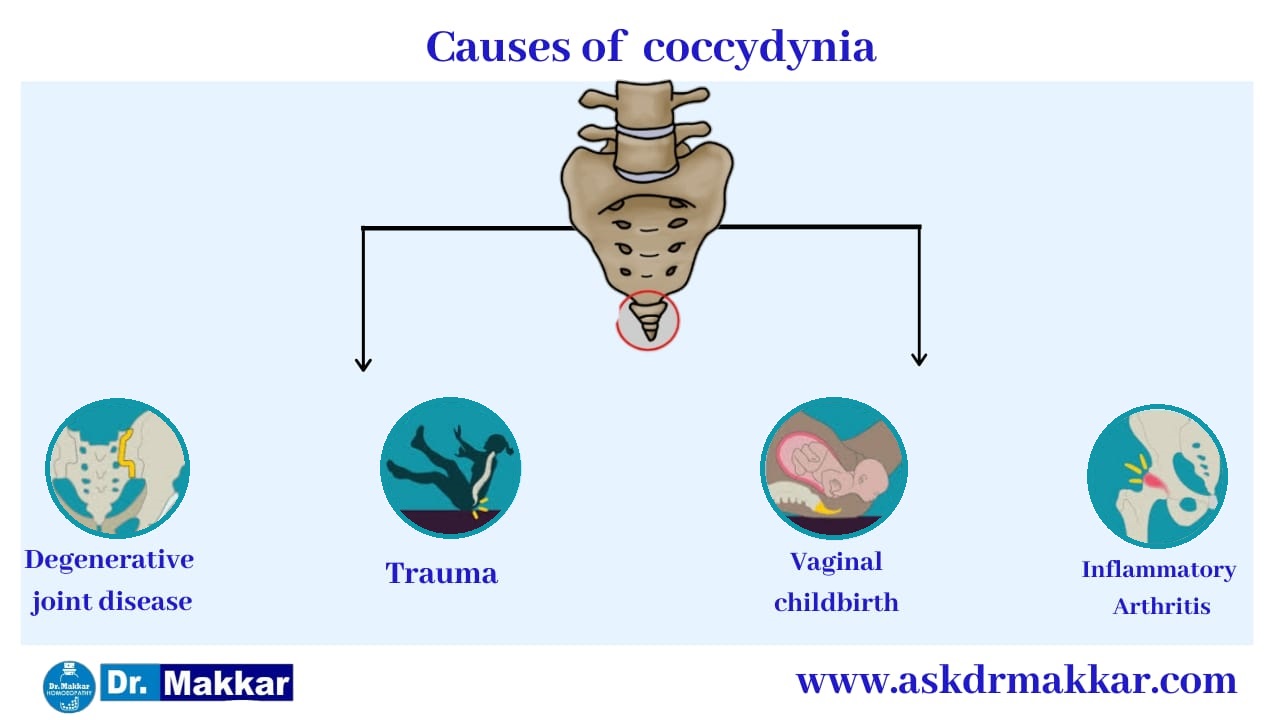
Coccydynia is typically caused by the following underlying anatomical issues:
Hypermobility, or too much movement of the coccyx puts added stress on the joint between the sacrum and coccyx and on the coccyx itself. Too much mobility can also pull the pelvic floor muscles that attach to the coccyx, resulting in tailbone and pelvic pain.
Limited mobility of the coccyx causes the tailbone to jut outward when sitting, and can put increased pressure on the bones and the sacrococcygeal joint. Limited coccyx movement may also result in pelvic floor muscle tension, adding to discomfort.
In rare cases, part of the sacrococcygeal joint may become dislocated at the front or back of the tailbone, causing coccyx pain.
The above factors may result from an injury to the coccyx, or may develop as idiopathic coccydynia.
Falling
Who hasn’t fallen backwards onto their behind? Maybe your feet slipped out from under you on the ice. Maybe you fell off a ladder. Or, maybe you were leaning too far back in your office chair and took a tumble. If you take a really bad fall you can bruise, break (fracture) or dislocate (knock out of place) your tailbone (coccyx).
Repetitive Strain Injury (RSI)
Sports like bicycling and rowing require you to lean back and forth and stretch your spine. Too much of that repeated motion can strain the tissues around your coccyx.
Pregnancy/Childbirth
During the third trimester of pregnancy, a woman’s body secretes hormones that soften the area between the sacrum and the coccyx. This enables the coccyx to move as necessary during childbirth. This is a natural process but, unfortunately, such movement may stretch the muscles and ligaments around the coccyx too far, causing additional pain. Such a strain on those soft tissues keeps them from supporting your coccyx at the correct angle.
Obesity
Extra weight applies additional pressure to the coccyx. This can cause the coccyx to lean backward. Your tailbone will hurt if it is out of position.
Underweight
If you don’t have enough fat in your buttocks to prevent your coccyx from rubbing against the muscles, ligaments and tendons, that can cause. The rubbing inflames the soft tissues.
Sitting
Just this simple act can increase coccyx pain, especially if you’re sitting on a hard or narrow surface. Do your best to get up often, stretch and take a short walk. Better yet, find yourself a softer, more comfortable place to sit or use a cushioned seat.
Cancer
Only in rare cases is tailbone pain a sign of cancer. It is extremely unlikely.